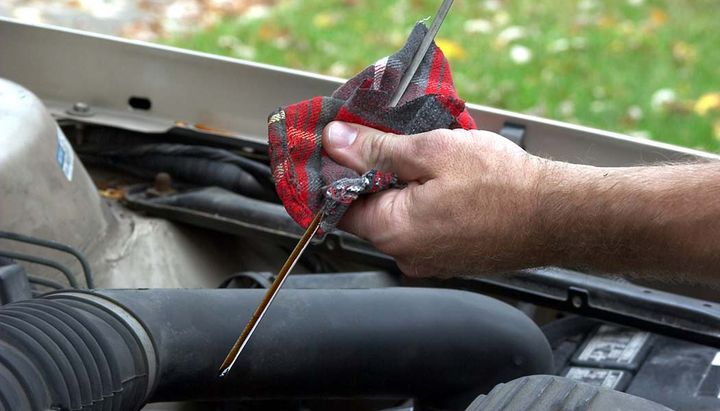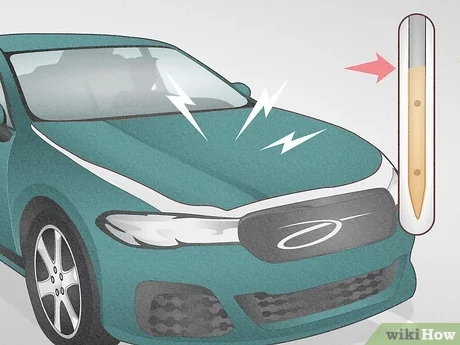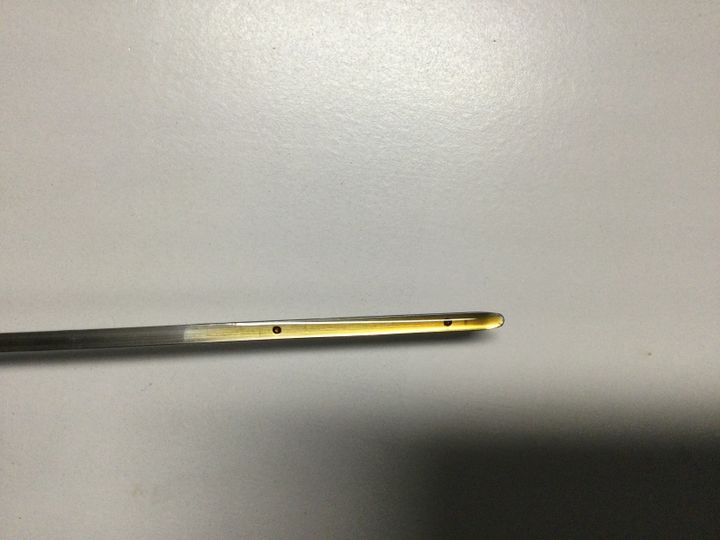


Engine oil is a vital fluid that lubricates the moving parts of an engine, reducing friction and wear. It serves several critical functions:
Lubrication: The primary role of engine oil is to create a thin film between moving components, minimizing metal-to-metal contact and reducing friction. This lubrication helps prevent excessive wear and tear, prolonging the engine's lifespan.
Cooling: As the engine operates, it generates significant heat due to combustion and friction. Engine oil helps dissipate this heat, preventing overheating and potential damage to engine components.
Cleaning: Engine oil contains detergents and dispersants that help remove contaminants, such as carbon deposits, sludge, and other byproducts of combustion, keeping the engine clean and running efficiently.
Corrosion Protection: Engine oil contains additives that help prevent corrosion and rust formation on internal engine parts, safeguarding them from premature degradation.
Sealing: Engine oil forms a seal between the piston rings and cylinder walls, improving compression and preventing leakage of combustion gases.

When you overfill your engine with too much oil, it can lead to a variety of issues that can potentially damage your vehicle's internal components. Here are some of the most common problems that can arise:
The crankcase is designed to accommodate a specific volume of oil, and when you exceed that capacity, it can create excessive pressure within the system. This increased pressure can cause oil to seep past the seals and gaskets, leading to leaks and potential contamination of other components.
| Symptom | Potential Damage |
|---|---|
| Oil leaks | Contamination of other components |
| Gasket/seal failure | Costly repairs or replacements |
| Increased crankcase pressure | Strain on engine components |
Excess oil can find its way into the combustion chambers, where it can foul the spark plugs and potentially damage the catalytic converter. This not only affects your engine's performance but can also lead to costly repairs or replacements.
| Component | Potential Issue |
|---|---|
| Spark Plugs | Fouling, misfiring |
| Catalytic Converter | Clogging, reduced efficiency |
When there's too much oil in the system, it can create additional drag on the engine's moving parts, causing them to work harder and consume more fuel. This reduced fuel efficiency can be a frustrating and costly issue, especially with today's high gas prices.
The excess oil can also create a foaming effect, which reduces the lubricating properties of the oil. This can lead to increased friction and wear on critical components like bearings, pistons, and cylinder walls, potentially shortening the lifespan of your engine.
| Component | Potential Damage |
|---|---|
| Bearings | Increased friction, premature failure |
| Pistons | Increased wear, scoring |
| Cylinder Walls | Increased wear, scoring |
As a mechanic, I've learned that the key to addressing any automotive problem is to first identify the root cause. Here are some telltale signs that you may have overfilled your engine oil:
The most straightforward way to check for overfilling is to inspect the dipstick. If the oil level is above the maximum mark, or if there's oil dripping from the fill tube, it's a clear indication that you've added too much oil.
Knocking or pinging sounds from the engine
Blue smoke emanating from the exhaust
These could be signs of overfilled oil, as the excess oil can cause these symptoms as it burns or leaks into the combustion chambers.
Lack of power or acceleration
Significant drop in fuel efficiency
These performance issues could be due to the added strain on the engine caused by the excess oil.
Once you've identified that your engine has been overfilled with oil, it's crucial to take immediate action to prevent further damage. Here are the steps I typically recommend:

The first step is to remove the excess oil from the system. This can be done using an oil extractor or by simply removing the drain plug and allowing the excess oil to drain out. Be sure to dispose of the used oil properly and in an environmentally responsible manner.
In some cases, the excess oil can contaminate or damage the oil filter, so it's a good idea to replace it with a new one. This ensures that any debris or contaminants are removed from the system.
After draining the excess oil and replacing the filter, it's important to start the engine and listen for any unusual noises or vibrations. If everything seems to be running smoothly, you may have caught the issue in time and avoided any significant damage.
However, if you notice any lingering issues or if the engine doesn't seem to be running properly, it's advisable to have a professional mechanic inspect the vehicle for potential damage to internal components. Here are some common areas to check:
Cylinder walls and pistons for scoring or excessive wear
Bearings for signs of premature failure or damage
Catalytic converter for clogging or reduced efficiency
Spark plugs for fouling or damage
As the saying goes, "an ounce of prevention is worth a pound of cure." To avoid the hassle and potential costs associated with overfilling your engine oil, here are some preventive measures you can take:
Always refer to your vehicle's owner's manual or consult with a professional mechanic to determine the correct oil capacity and recommended change intervals for your specific make and model.
Make it a habit to check your oil level regularly, especially before embarking on long trips or after any significant driving. This will help you catch any potential overfilling issues early on.
When adding or changing oil, use the appropriate tools and techniques to ensure accurate measurements. Consider investing in a quality oil extractor or funnel to minimize spills and overfilling.
For vehicles without traditional dipsticks, it's essential to have the oil level sensor checked periodically to ensure it's providing accurate readings. Faulty sensors can lead to overfilling or underfilling, both of which can be detrimental to your engine's health.
The cost of repairing damage caused by overfilling engine oil can vary significantly depending on the extent of the damage. Here's a general breakdown of potential costs:
| Repair | Estimated Cost Range |
|---|---|
| Oil change and filter replacement | $50 - $200 |
| Spark plug replacement | $100 - $400 |
| Catalytic converter replacement | $500 - $2,000 |
| Engine overhaul or replacement | $2,000 - $8,000+ |
It's important to note that ignoring the issue of overfilled engine oil can lead to more extensive and costly repairs in the long run, such as engine failure, catalytic converter damage, and increased wear on critical components. Addressing the problem promptly and following proper maintenance procedures can help prevent expensive repairs and prolong the life of your vehicle's engine.
Overfilling your engine oil, even by a single quart, can have serious consequences for your vehicle's performance and longevity. As a mechanic, I've seen firsthand the damage that can be caused by excess oil, and I cannot stress enough the importance of addressing the issue promptly.
By following the steps outlined in this article, you can identify and rectify the problem before it escalates into more costly repairs. Remember, prevention is key, so make it a habit to regularly check your oil level and follow the manufacturer's recommendations for oil changes and maintenance.
Proper maintenance and attention to detail can go a long way in ensuring the longevity of your vehicle's engine and saving you from unnecessary expenses down the road. So, the next time you're tempted to "top off" your oil, remember the potential consequences and err on the side of caution.
Excessive oil in the engine can cause the crankshaft to whip and aerate the oil, creating a foamy substance that cannot lubricate properly. This reduces the oil's ability to cool and protect the engine components.
Common symptoms include blue smoke from the exhaust, oil leaks, decreased fuel efficiency, and unusual engine noises like knocking or tapping sounds.
Yes, the excess oil can find its way into the combustion chambers and contaminate the catalytic converter, potentially clogging or reducing its efficiency.
Park your vehicle on a level surface, allow the engine to cool, and check the dipstick to confirm the oil level. If it's above the maximum mark, you'll need to remove the excess oil.
You can use an oil extractor pump or simply drain the excess oil through the drain plug, following the same procedure as an oil change.
It's not recommended to drive your car with excessive oil, as it can cause further damage to the engine components. Address the issue as soon as possible.
It's a good practice to check your oil level regularly, especially before long trips or after significant driving, to catch any potential overfilling issues early on.
Yes, the excess oil can find its way into the spark plug wells, causing fouling and potentially leading to misfiring or engine performance issues.
Repair costs can range from a simple oil change and filter replacement (around $50-$200) to an engine overhaul or replacement (potentially $2,000 or more).
Always refer to your vehicle's owner's manual for the correct oil capacity and recommended change intervals. Use the proper tools and techniques when adding or changing oil, and check the dipstick regularly.

Sarah isn't your average gearhead. With a double major in Mechanical Engineering and Automotive Technology, she dived straight into the world of car repair. After 15 years of turning wrenches at dealerships and independent shops, Sarah joined MICDOT to share her expertise and passion for making cars run like new. Her in-depth knowledge and knack for explaining complex issues in simple terms make her a valuable asset to our team.













